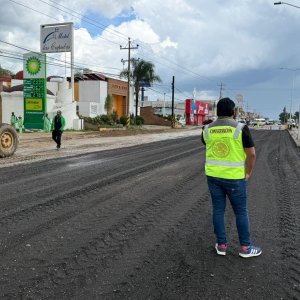Looking Back to Prevent Airport Saturation

STORY INLINE POST
The air transportation needs of the Valley of Mexico have overcome AICM’s capacity. In an airport where delayed flights are common, the problem is only getting worse as air traffic grows. As Reyes Juárez, President and Director General of NAICM project manager FOA puts it, “the older airport’s saturation is no longer manageable as passenger and flight volumes have grown drastically.”
AICM’s field saturation was officially recognized through a memo published in September 2014 in the Official Journal of the Federation. Still, between 2015 and 2016, total passenger volumes rose 8.5 percent and flight operations climbed 5 percent. Some measures, like reducing AICM’s traffic, have been put in place to boost the airport’s efficiency. Small and official planes have also been diverted to other airports in the Metropolitan Airport System, especially Toluca. But these measures have not stalled AICM’s overcapacity problems.
Since the 2014 memo was published, NAICM has become a top national priority and it cannot start operating soon enough. “NAICM’s size and its ability to cope with large passenger flows and a higher number of flight operations can turn Mexico into a key logistical hub in America,” says Juárez. As part of NAICM’s Project Management Office (PMO), FOA maintains direct communication with GACM and provides final instructions to contractors while supporting the project’s administration through its engineering subsidiaries. The firm manages part of the new airport’s risk using its experience in end-to-end project management. In the case of this particularly important project, addressing the issues that led to AICM being overwhelmed and implementing technological solutions accordingly is necessary so that the same mistakes are not made.
Over time, several issues have reduced the older airport’s capacity to cope with the increasing number of flight operations. “AICM was originally planned to have two runways well separated from each other, but they ended up being built far too close to one another to run simultaneously,” Juárez says. After the devastating earthquake of 1985 that leveled parts of Mexico City, the government had to use some land originally destined for the airport to build homes for victims of the catastrophe, he says. This forced AICM’s developers to fit the original plans into a smaller piece of land and limited its potential capacity. “If the original plan had been respected, AICM would face fewer problems in meeting the city’s demands,” says Juárez. But it is not only saturation issues that FOA must consider; the firm faces a series of challenges as part of NAICM’s PMO. “To achieve NAICM’s construction’s approval, the Law of Public Works had to be changed since it was not designed with the administration of such a huge project in mind,” says Juárez. FOA must also manage the millions of decisions made on size and priority and the number of contracts on the project. Authorities seek concessions with the least number of contracts to mitigate the coordination required and to promote the project’s continuity between administrations.
Several tools are being used to help ensure that GACM and NAICM’s PMO finish the project on time and on budget. Primavera is a software that organizes the project’s many details, ACCONEX manages the documents the project requires and PGPI-Risk, developed by FOA, helps the company register and control risks by organizing them according to urgency. “This software is updated daily by onsite workers, which helps FOA keep track of changes and daily matters ranging from weather to community discussion and possible risks,” says Juárez. Constantly updating information and properly organizing data are essential to prevent risks from becoming serious problems, to guarantee timely completion and to facilitate accountability whenever an issue arises. “It is much cheaper to invest in well-designed plans and risk mitigation tools than cleaning up a problem after it occurs,” says Juárez.
The construction of NAICM is essential to the country’s development. He says the inclusion of both international and national firms in such a complex project ensures the application of international best practices while also showcasing Mexican talent. “Mexican companies taking part in NAICM will be able to more efficiently compete internationally and more easily join mega infrastructure projects around the world,” he says.























